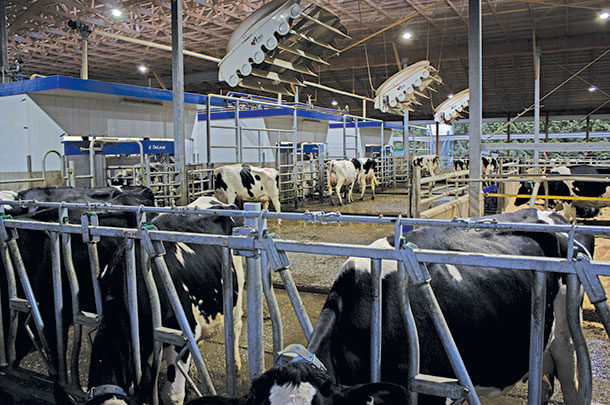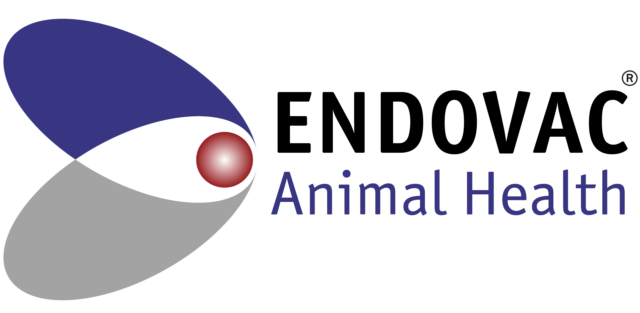To read this in French, click here.
The transition from parlor milking to robotic milking should be viewed as a tool to help move your dairy from good to great.
A key part of this good-to-great journey is the planning and learning that happens between the time the equipment is ordered and the time the first cow is milked. Jim Collins’ book Good to Great is based on his study of 11 companies that transitioned from good to great and sustained that great performance for at least 15 years.
Collins identified seven principles diverse companies like Walgreens, Kimberly-Clark, Gillette and Nucor had in common: level 5 leadership, get the right people on the bus, confront the brutal facts, define your hedgehog concept, have a culture of discipline, use technology as an accelerator and build a flywheel of momentum. Each of those principles applies to the process of transitioning to robotic milking.
1. Level 5 leadership. Level 5 leadership is not who you are; it is what you do. In the case of transitioning to robotic milking, the level 5 leader needs to establish clear expectations for everyone involved. Management-level employees need to know how their lives will be different – will they move from managing people to managing machines or managing people in different roles? What will that look like? Laborers need to know whether they will still have jobs. If positions will be eliminated, will there be an incentive to stay until the transition is complete or help finding a new role? Level 5 leaders create communication and transparency.
2. The right people on the bus. Collins paraphrases this as, “First who, then what?” The nutritionist, veterinarian, banker, hoof trimmer, milk hauler and others who got your dairy where it is are the best people to help you through the transition to robotic milking. They know your business, and you have established relationships with them. The “who” stays the same. The “what” may change. The nutritionist must understand how to incorporate a robot pellet into the ration. The veterinarian and the hoof trimmer may need to work in different spaces and at different times. The people in charge of milk transportation may influence wash times, and their consistency may be crucial to cow flow. Get all your key influencers involved in team meetings early in the transition process so you can learn from their experiences and keep them all on the bus.
3. Confront the brutal facts. There are rules you can’t break, and there are a lot of little things that need to get done for a successful transition to robotic milking. Cows need to have the right ID, attached to them and in the herd management software. Cows should have a chance to become familiar with the robot pellet before the first milking. If possible, introduce finger gates in familiar cow traffic areas before startup so they are not a bottleneck at startup. Plan which cows and how many cows your system will be able to handle at startup. Overloading the system initially will extend the time frame to reach full capacity. This is by no means a complete list. Confronting the brutal facts means having a plan so these important tasks don’t wait until the week before the robots start milking cows.
4. The hedgehog concept. This comes from the age-old conflict between the fox and the hedgehog. The fox has many ways to attack the hedgehog, but none of them work because the hedgehog does one thing very well to protect itself from the fox. The hedgehog knows what it is best at – curling up in a ball and letting its quills do the work. Curling up in a ball is not going to help with your transition to robotic milking, but knowing what you are best at and continuing to do it is an important part of your success. If genetic improvement has been a driver for your success in the past, it should continue to be a priority. Whether you have focused on components or milk yield in the past, your focus should be the same moving forward. Know your hedgehog concept – what you are best at – and set new goals consistent with it.
5. Establish a culture of discipline. This is closely related to your hedgehog concept and sticking with what you are best at, but it goes a step further. Most robotic milking transitions go through a stage during which they try to change too many things at once. They change one setting and then another, and then try a new feed table and adjust milking permissions. It takes a culture of discipline to slow down and make one change at a time so you can evaluate the results of one change before making another. Consider putting one person in charge of entering new robot settings to create accountability. Document each change so you can measure the results. Get input from the whole team before making changes so every perspective is considered.
6. Technology as an accelerator. If you know your hedgehog concept and establish a culture of discipline, the next principle will follow naturally. It is interesting that many of the companies Collins studied used technology in their good-to-great transition, but none of them had technology as their hedgehog concept. Just like driving your pickup truck, using the accelerator will get you where you are going more quickly, but if you are on the wrong road or going the wrong direction, the results will not be what you had planned. Quality feed, cow comfort and reproductive efficiency are just as important to profitable robotic dairying as they are to any other dairy business. You need to have these basics right for the technology accelerator to be effective.
7. Flywheel effect. Think of a huge cast-iron flywheel. It is so heavy that no matter how hard you try, one push will not get it moving. But with many small pushes, and more and more people pushing, the wheel moves faster and faster. Each push that barely made the wheel move at the start adds speed, and the momentum grows – as long as everyone keeps pushing in the same direction. There are no shortcuts to building the momentum. Every push counts.
Each of the steps associated with the Good to Great principles is another push on the flywheel. Every push matters. The transition is a lot of work, and there are no shortcuts. But as you move through the process – three days, three weeks, three months and three years down the road – there are few things more rewarding than watching a successful robotic barn flow and finding the next tweak to push performance to the next level – from good to great.











